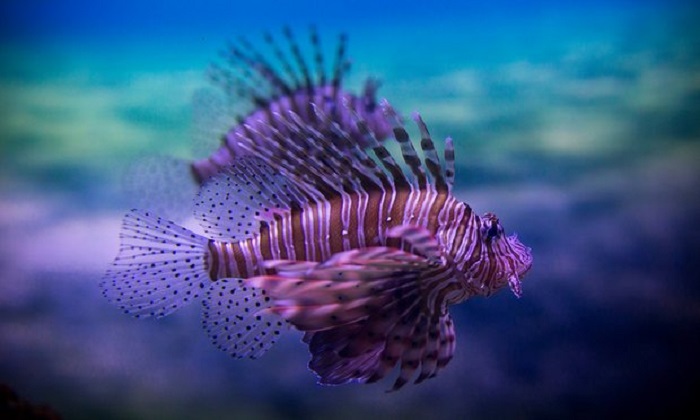Poisonous tropical lionfish could be spreading through Mediterranean

“That shows that the fish is spreading, and that’s a cause for concern,” said Maria del Mar Otero of the UICN.
The highly invasive, predatory fish, also known as the devil firefish, is a native of the south Pacific and Indian Ocean.
Stings from its barbs are rarely fatal to humans, but can cause extreme pain, vomiting and respiratory paralysis.
Environmentalists fear that the fish’s arrival in the eastern Mediterranean could decimate stocks of other fish, with knock-on effects on the rest of the marine environment.
Dr Carlos Jimenez, a marine biologist at the Cyprus Institute, said the species “could have a heavy negative impact on the ecosystems as well as on local economies”.
Despite their conspicuous colours and slow movements, even sharks won’t go near lionfish, giving them free rein to feed and wipe out other species that normally keep algae in check.
This could attract the arrival of new invasive species because of the weakening of the local fauna and flora, said Jimenez.
The voracious fish caused environmental havoc after it was introduced to the Caribbean.
Lionfish were first recorded in Cuba in 2007 and within two years they were common in waters around the island, said Delmis Cabrera, a marine biologist at the National Aquarium in Havana.
The Association of Caribbean States organised a summit to discuss ways of combatting the fish’s spread.
Cuba, Colombia and the Bahamas have encouraged their populations to start eating the fish to keep down numbers.
Cuba now holds an annual fishing tournament for the species. Restaurants have begun serving its white, juicy flesh, long enjoyed as a delicacy in Japan.
The first sightings of the fish in Mediterranean waters were off Israel in 1991. More recently they have been seen in Lebanese and Tunisian waters, according to the UICN.
The fish may have been introduced by aquarium enthusiasts who let them loose, or via the Suez Canal from the Red Sea, where there is a flourishing population.
Cargo ships’ ballast water is an ideal hiding place for invasive species.















































